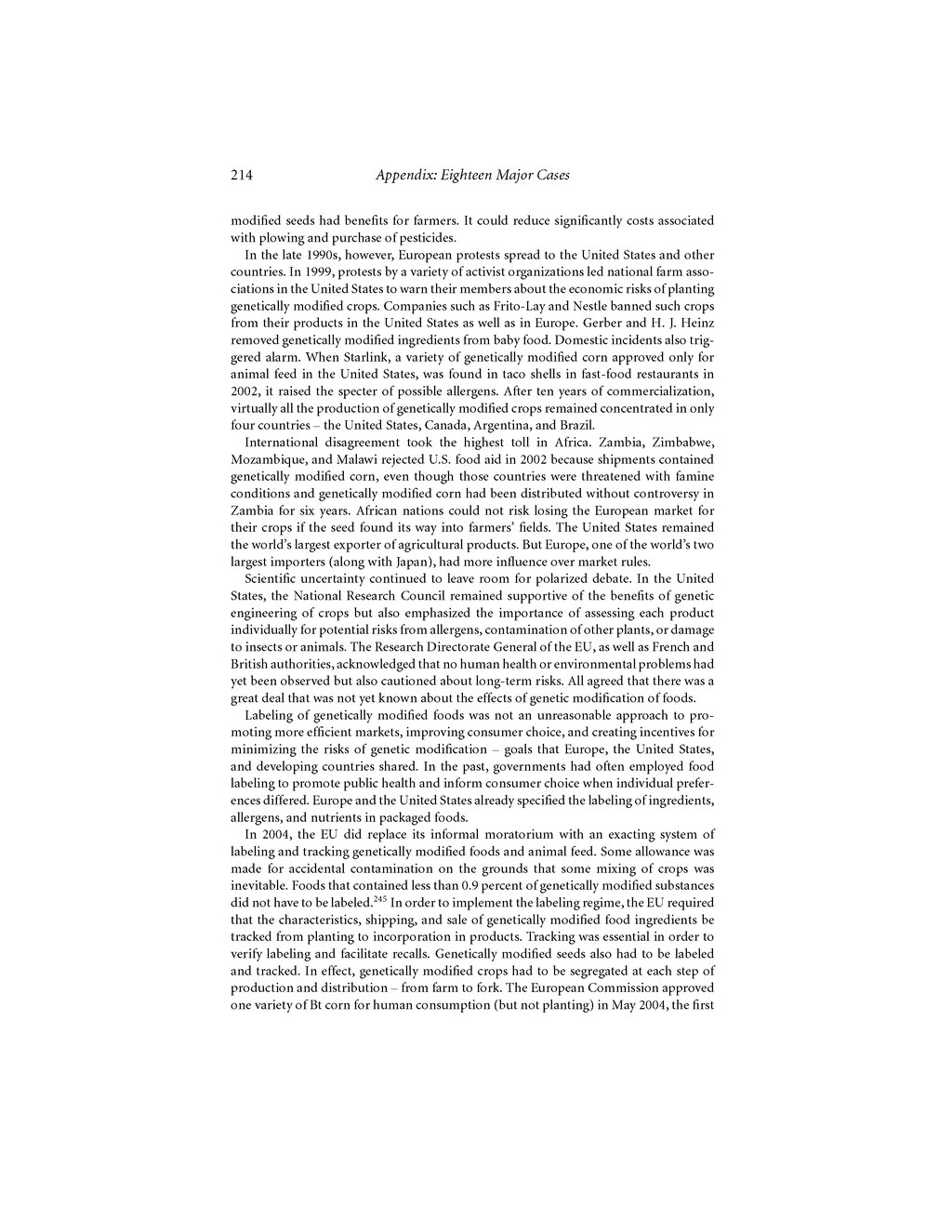modified seeds had benefits for farmers. It could reduce significantly costs associated with plowing and purchase of pesticides.
In the late 1990s, however, European protests spread to the United States and other countries. In 1999, protests by a variety of activist organizations led national farm associations in the United States to warn their members about the economic risks of planting genetically modified crops. Companies such as Frito-Lay and Nestle banned such crops from their products in the United States as well as in Europe. Gerber and H. J. Heinz removed genetically modified ingredients from baby food. Domestic incidents also triggered alarm. When Starlink, a variety of genetically modified corn approved only for animal feed in the United States, was found in taco shells in fast-food restaurants in 2002, it raised the specter of possible allergens. After ten years of commercialization, virtually all the production of genetically modified crops remained concentrated in only four countries – the United States, Canada, Argentina, and Brazil.
International disagreement took the highest toll in Africa. Zambia, Zimbabwe, Mozambique, and Malawi rejected U.S . food aid in 2002 because shipments contained genetically modified corn, even though those countries were threatened with famine conditions and genetically modified corn had been distributed without controversy in Zambia for six years. African nations could not risk losing the European market for their crops if the seed found its way into farmers’ fields. The United States remained the world’s largest exporter of agricultural products. But Europe, one of the world’s two largest importers (along with Japan), had more influence over market rules.
Scientific uncertainty continued to leave room for polarized debate. In the United States, the National Research Council remained supportive of the benefits of genetic engineering of crops but also emphasized the importance of assessing each product individually for potential risks from allergens, contamination of other plants, or damage to insects or animals. The Research Directorate General of the EU, as well as French and British authorities, acknowledged that no human health or environmental problems had yet been observed but also cautioned about long-term risks. All agreed that there was a great deal that was not yet known about the effects of genetic modification of foods.
Labeling of genetically modified foods was not an unreasonable approach to promoting more efficient markets, improving consumer choice, and creating incentives for minimizing the risks of genetic modification – goals that Europe, the United States, and developing countries shared. In the past, governments had often employed food labeling to promote public health and inform consumer choice when individual preferences differed. Europe and the United States already specified the labeling of ingredients, allergens, and nutrients in packaged foods.
In 2004, the EU did replace its informal moratorium with an exacting system of labeling and tracking genetically modified foods and animal feed. Some allowance was made for accidental contamination on the grounds that some mixing of crops was inevitable. Foods that contained less than 0.9 percent of genetically modified substances did not have to be labeled. 245 In order to implement the labeling regime, the EU required that the characteristics, shipping, and sale of genetically modified food ingredients be tracked from planting to incorporation in products. Tracking was essential in order to verify labeling and facilitate rec all s. Genetically modified seeds also had to be labeled and tracked. In effect, genetically modified crops had to be segregated at each step of production and distribution – from farm to fork. The European Commission approved one variety of Bt corn for human consumption (but not planting) in May 2004, the first
